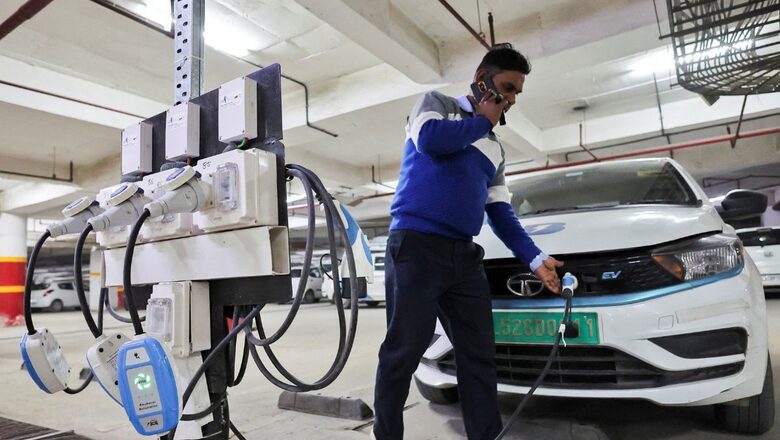
views
More than 10 million households will get 300 units of free electricity per month under the Centre’s flagship rooftop solarisation scheme, finance minister Nirmala Sitharaman announced while presenting the interim budget on Thursday. She highlighted India’s strong intent to build a ‘net zero’ green economy by 2070.
The nationwide scheme will incentivise households to save up to Rs 15,000 to Rs 18,000 annually from free solar power, by selling surplus electricity to distribution companies. First announced by Prime Minister Narendra Modi on January 22, the scheme is also expected to contribute to India’s ambitious goal of installing 500 GW of non-fossil power by 2030.
Viability gap funding for 1 GW offshore wind energy
Sitharaman also announced viability gap funding for harnessing offshore wind energy potential for an initial capacity of 1 GW, as well as setting up of coal gasification and liquefaction capacity.
Experts said the support to 1 GW offshore wind could also be a game changer for the sector, considering that India is expected to generate 130 GW of the 500 GW of non-fossil based energy through wind sources by 2030. But, more support is needed.
The current outlay for wind power as a whole is Rs 930 crore, which is lower than Rs 1,214-crore budget in the previous fiscal, said Shantanu Srivastava, lead analyst for sustainable finance and climate risk, Institute for Energy Economics and Financial Analysis (IEEFA).
“The government had released an auction plan to bid out 37 GW equivalent of offshore wind energy projects in the next eight years till 2029-30. This will require additional outlay to achieve the target,” he said.
The outlay for the Green Hydrogen Mission is Rs 600 crore, which is a step up from the previous year.
Electric vehicles
According to experts, the budget’s push for strengthening the electric vehicle (EV) ecosystem and the large-scale rollout of e-buses through payment security mechanisms, will also help decarbonise the mobility sector and propel India as a potential manufacturing hub.
“The announcement of the Rs 1 lakh crore corpus is a remarkable step to attract private investment in innovation, research and development in the clean energy sector,” said Saurabh Kumar, vice-president India, Global Energy Alliance for People and Planet (GEAPP).
“The emphasis on new railway corridors for energy, minerals and cement will also help cut pollution by reducing reliance on trucks, along with the expansion of the electric mobility ecosystem,” said Aarti Khosla, director of Climate Trends, while highlighting that these measures will also cut down India’s overdependence on fossil fuels like imported crude oil.
Bio-based economy, coal gasification
The budget also laid thrust on a bio-based economy and included a new scheme of biomanufacturing and bio-foundry to support environment-friendly options, which is expected to remove some of the bottlenecks and help the sector to grow and enable industries to decarbonise.
“Biogas can play a critical role but whether it is ethanol from sugarcane or maize or excess feedstocks, needs distinction. The burning of excess stubble that leads to air pollution needs more support from the government, both on technology and finance,” said Vibhuti Garg, director South Asia, IEEFA.
The finance minister also announced phased mandatory blending of CNG, PNG and compressed biogas, as well as the financial aid for procurement of biomass aggregation machinery. Experts further said coal gasification, though controversial, can play a significant role in India’s energy security amid the Global North’s push for gas as a transitional fuel.
“India has abundant coal reserves, which, if gasified, can produce a near equivalent to natural gas. The phased mandatory blending of compressed biogas with compressed natural gas for transport and PNG purposes, is a well thought out strategy to clean the coal gasified gas,” said Dhruba Purkayastha, India director of Climate Policy Initiative.














Comments
0 comment